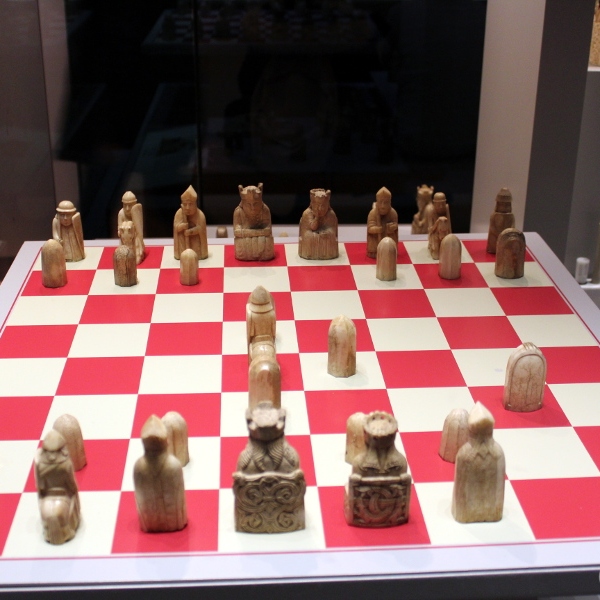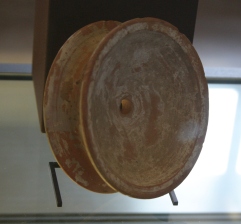
A chess set for Vikings and backgammon for Kings
When it comes to the British Museum game collection, the first thing that springs to mind is definitely the Lewis Chess set, so well known from the Harry Potter films. Remember the scene from Harry Potter and the Philosopher’s Stone, where Harry and Ron play chess? The pieces are replicas of the Lewis chessmen, a Norse chess set discovered on the Isle of Lewis, Scotland, dating from 1150-1200. Consisting of 93 walrus ivory figures, the Lewis chessmen make up arguably the best-preserved ancient chess set in the world. 82 of the pieces can be admired at the British Museum, while the other 11 are at the National Museum of Scotland in Edinburgh.

The next game is slightly less known than the Lewis chessmen, but when you hear about the antiquity of it, you’ll probably be gobsmacked! We are talking about the royal game of Ur, a predecessor of modern backgammon, played 5000 years ago in ancient Mesopotamia. That literally means that whilst the rest of the world was worrying about hunting and such, in Mesopotamia people would play sophisticated board games.
The game took its name from the royal tombs of the city of Ur (Iraq), where it was discovered in the 1920’s. Very popular in its time, the game of Ur, was gradually replaced by new games like the game Tabula (a direct ancestor of backgammon), and therefore its rules were forgotten, until British museum curator Irving Finkel decoded and reconstructed the rules from a terracotta tablet dated 177 BC. And now, thanks to Mr Finkel, we are able to play such a fascinating and ancient game again. In the image below, you can have a look at a 3D scan, made on our last visit to the museum.
Ancient Greek toys
Let’s leave Mesopotamia behind and move onto classical Greece. The Parthenon Marbles, also known by the controversial name “Elgin Marbles”, are undoubtedly one of the most important achievements of Greek art that are on display in the British Museum. They represent everything we love about ancient Greece: art, history, literature, philosophy, etc. But if you want to get to know a more humanised side of the ancient Greeks, you would do well to turn to more trivial pieces of art and everyday life. And there is no more perfect way to do that than to visit the museum’s toys collection. However, you won’t be astonished by the grandeur of these objects. Instead, these toys will strike a chord in your heart, contradicting the idea that ancient Greeks were severe and boring. On the contrary, they used to have plenty of fun…
The museum’s collection is made up of the most representative toys of that time. Many of them have strange and mysterious shapes. Others are cute (like this terracotta piglet in the next photo), but deep down they are quite similar to ours.

Out of the first gifts a baby would receive, rattles were the most popular. The noise they made was supposed to drive away ghosts and demons. Rattles had animal shapes like owls (see image), mice, pigs, etc.

Girls used to play with dolls. In the collection we can see different types of Greek dolls, like this dancing doll from the city of Corinth. They had an educational character too, by introducing girls to the roles and obligations of a woman in society at that time. On the eve of their wedding day, girls dedicated their dolls to the goddess Artemis.

Children would also play dexterity games like spinning tops, marbles and, of course, knucklebones. The latter were made of bones, particularly lamb’s feet, and were used as dice as well.
Finally, an interesting source of information about everyday life and children’s games is Greek pottery. In this “chous” (wine-jug), we can see some children playing during a festival in Athens.

Next time you’re in the British museum, don’t forget to take a look at the game collection – there are many many more!


































